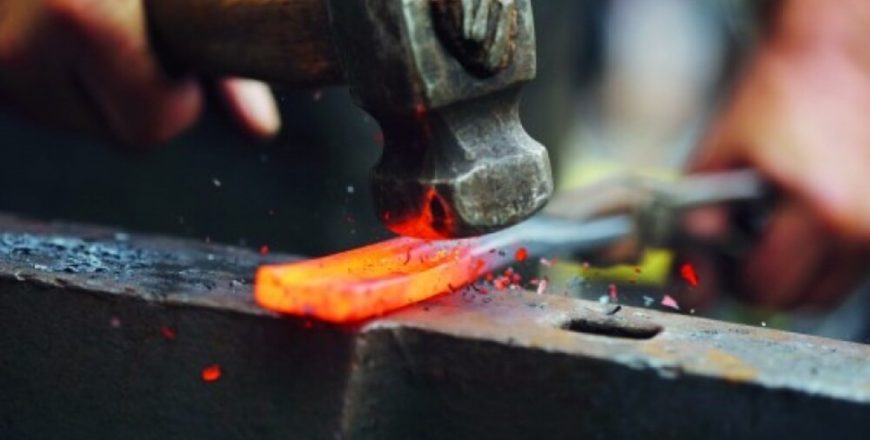
On a blacksmith apprenticeship course, you’ll use craft, art or skill to design, shape and join metal components by hot forging and other metalworking processes.
As a blacksmith, you will design, shape, and join metal components for small batch or bespoke production and/or historical metalwork restoration utilising hot forging and other metalworking methods.
Your work may range from large-scale architectural ironwork such as public art sculptures, gates, and railings to household decorative and utilitarian items such as furniture, fireplace decorations, and mirror frames.
Forging tongs, wood turning tools for the local carpenter, and industrial tools such as spanners or forged components for delivery to a plant as part of a production line are all tools you may create for yourself and others.
As a blacksmith, you commonly work on commission to produce larger pieces. Still, you will also often manufacture smaller items for direct retail or wholesale distribution to shops and galleries.
What you’ll learn
On a blacksmith apprenticeship course, you’ll learn to:
- Use safe workplace practices to maintain health and safety standards for oneself and others.
- Prepare and maintain a safe working environment, which includes the ability to utilise both hand and mechanised tools and correctly handle fuel and light and operate the forge.
- Identify and mitigate hazards in the workplace.
- Create and comprehend specifications, samples, drawings, and other written and spoken instructions for metal production or repair.
- Identify and react to problems such as calculating jointing, forging, and bending tolerances, developing working templates or jigs from drawings, establishing an appropriate sequence of disassembly and construction, including testing and adjustment, and seeking advice and help as required.
- Produce hand or computer-aided design (CAD) technical drawings, designs, and models that colleagues and customers can understand while working on the final product.
- Select and apply the appropriate methods, techniques, materials, tools, and equipment for metal manufacture or repair, and carry out the blacksmithing process from conception to completion on an industrial scale.
- Make good use of your time by planning ahead of time and managing it well.
- Manage a forge or furnace effectively while hot forging, shaping, cutting, and connecting metals by hand and machine using forge tools.
- Carry out testing and modifications.
- Construct and fit work in the workshop and/or on-site, including component and product assembly and disassembly and metalwork fault repair.
Assessment methods
The End Point Assessment comprises three distinct assessment methods:
- Practical Project
- Skills Demonstration
- Professional Discussion underpinned by workplace journal
Duration, level, subjects and psalary upon completion
- Duration: 48 months
-
Level: 3 – Advanced Apprenticeship
- Relevant school subjects: Art and DT
- Potential salary upon completion: £21,000
Apprenticeship standard
More information about the Level 3 Blacksmith Apprenticeship standard can be found here.
Apprenticeship end point assessment
For more information about the End Point Assessment Process, please read the Institute of Apprenticeships’ information page.
